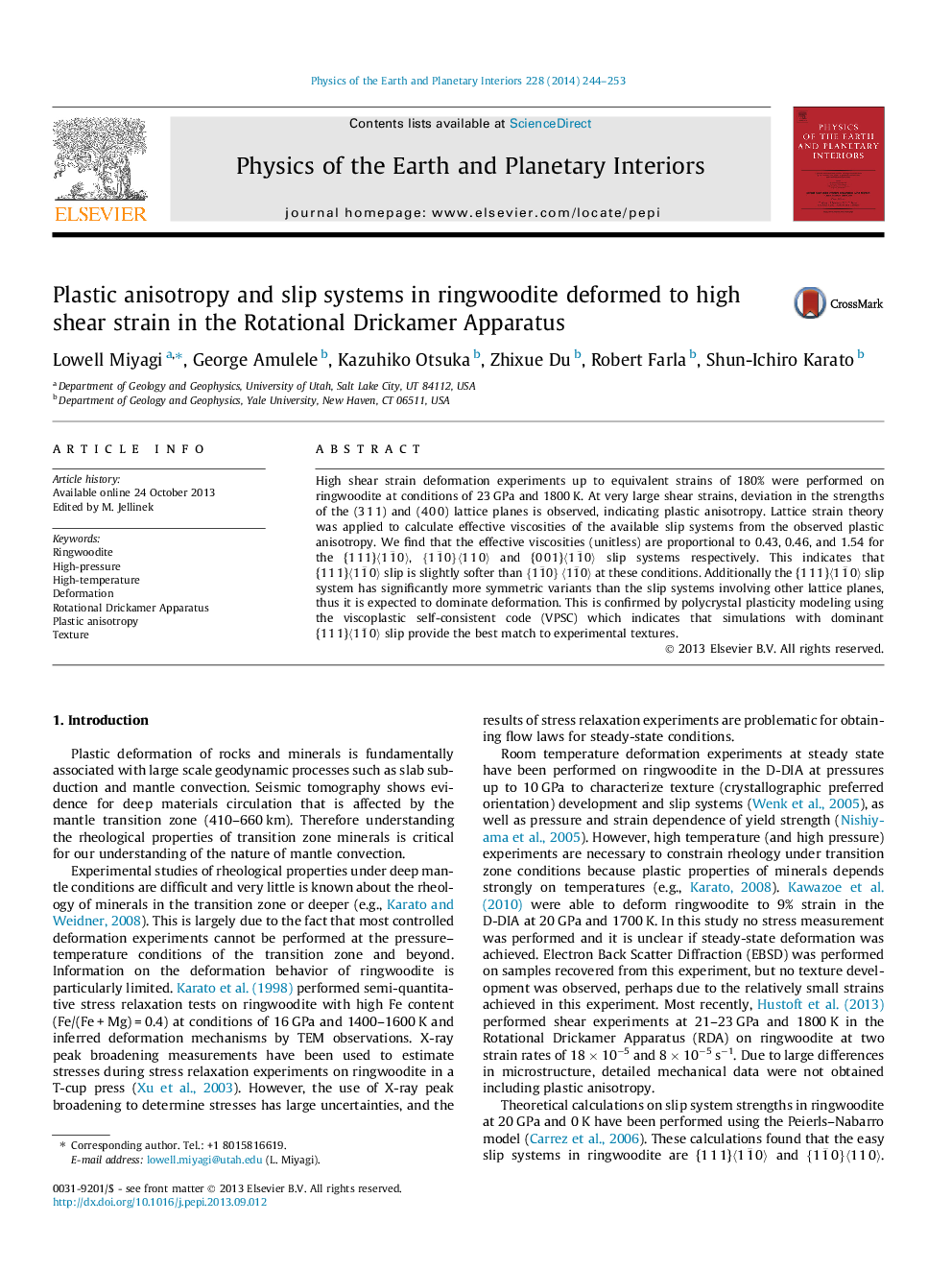| Article ID | Journal | Published Year | Pages | File Type |
|---|---|---|---|---|
| 4741597 | Physics of the Earth and Planetary Interiors | 2014 | 10 Pages |
•Ringwoodite was deformed to high shear strain at 23 GPa and 1800 K.•Textures were analyzed using synchrotron X-ray diffraction and the Rietveld method.•Lattice strain theory was applied to interpret observed plastic anisotropy.•Polycrystal plasticity modeling was performed to interpret experimental textures.•Texture and lattice strain analysis are consistent with dominant {1 1 1}〈11¯0〉 slip.
High shear strain deformation experiments up to equivalent strains of 180% were performed on ringwoodite at conditions of 23 GPa and 1800 K. At very large shear strains, deviation in the strengths of the (3 1 1) and (4 0 0) lattice planes is observed, indicating plastic anisotropy. Lattice strain theory was applied to calculate effective viscosities of the available slip systems from the observed plastic anisotropy. We find that the effective viscosities (unitless) are proportional to 0.43, 0.46, and 1.54 for the {1 1 1}〈11¯0〉, {11¯0}〈1 1 0〉 and {0 0 1}〈11¯0〉 slip systems respectively. This indicates that {1 1 1}〈11¯0〉 slip is slightly softer than {11¯0}〈11¯0〉 at these conditions. Additionally the {1 1 1}〈11¯0〉 slip system has significantly more symmetric variants than the slip systems involving other lattice planes, thus it is expected to dominate deformation. This is confirmed by polycrystal plasticity modeling using the viscoplastic self-consistent code (VPSC) which indicates that simulations with dominant {1 1 1}〈11¯0〉 slip provide the best match to experimental textures.
